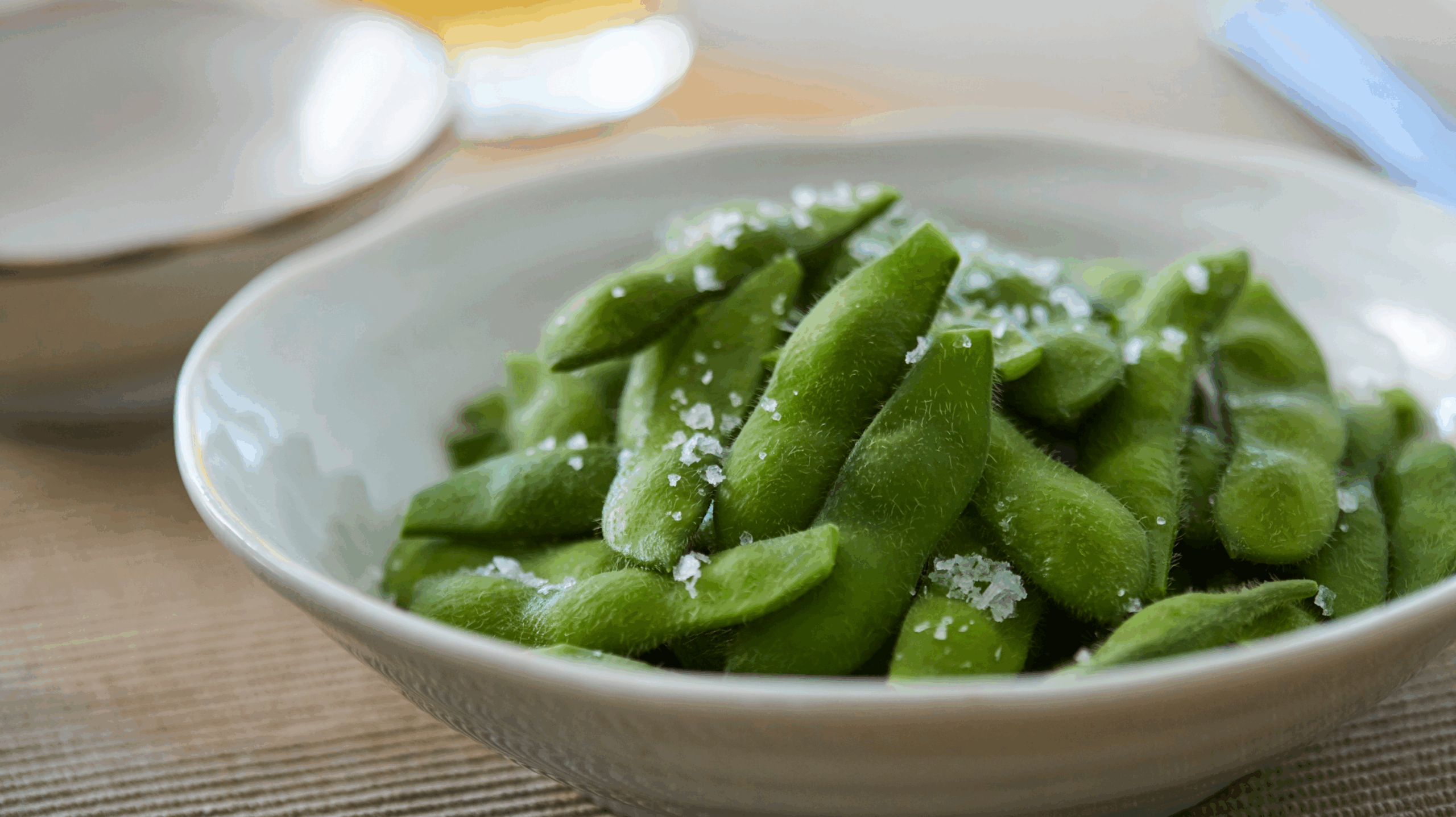
The Worst (And The Best) Foods for Perimenopause
Perimenopause can be confusing. With all these symptoms and changes, you’re searching for ways to feel relief. Look no further than strategic nutrition. Learn all about the worst foods for perimenopause, why they are enhancing your symptoms and, most importantly, what to eat instead.
What you eat will directly impact how you’re experiencing perimenopause. So, together we will explore the most nutritious foods so your perimenopause is manageable and less severe without compromising on flavour.
Let’s dig in.
What is perimenopause?
Let’s recap on the basics. Before we look at the worst and best foods for perimenopause, let’s first revisit the definition of perimenopause.
Perimenopause is a transitional period between pre-menopause and menopause itself. It tends to last a good few years.
During perimenopause, you may experience many of the common symptoms you associate with menopause, such as weight gain, hot flashes and night sweats, and brain fog. The real sticking point, though, that tells us you’re perimenopausal is that you’re still experiencing periods. They may not be as regular, but you are having some form of menstrual bleeding in this transition.
Perimenopause vs menopause – what’s the difference?
So, what’s the difference between perimenopause and menopause? It’s actually super simple. Until you have had no vaginal bleeding (including spotting) for 12 consecutive months, you are perimenopausal. Once you have tracked 12 months of no bleeding, you’re menopausal.
Your menstrual cycle during perimenopause may be different from what you’re used to, but if you’re experiencing any bleeding at all within 12 months, you’re not yet menopausal.
That’s why we say that menopause is, in fact, only one day. Perimenopause is the build up to that day.
Common symptoms of perimenopause
Everybody is different and every body is different. We all experience perimenopause in our unique way. Some women get away with experiencing very few symptoms, while others discover they suffer with the whole list!
That said, here are the most common symptoms of perimenopause:
- Changes to your menstrual cycle
- Mood changes
- Extreme irritability
- Anxiety
- Depression
- Mood swings
- Changes to libido
- Vaginal dryness
- Weight gain
- Perimenopause fatigue
- Hot flashes and night sweats
- Sleep disruption and insomnia
There are many more symptoms, but these are among the more common.
Are there foods for perimenopause that alter symptoms?
So, are there really foods for perimenopause that alter our symptoms? Absolutely, there are. But this works both ways. There are foods that will alter your symptoms for the better and foods that alter them for the worst.
The first step is to be aware of what you’re putting into your body and how that will impact your symptoms. But I’ve made it so easy for you – exploring the worst and best foods for perimenopause (along with reasons why).
The worst foods for perimenopause and why
Before we take a look at the best foods for perimenopause, we’ll start with which foods you should avoid.
1. Foods containing trans fats
Trans fats are types of dietary fats and, of all of them out there, trans fat is the absolute worst for your overall health. This is because, when there’s too much in your diet, trans fat can increase your risk for developing cardiovascular (heart) disease and other conditions.
If you’re trying to lower your cholesterol, you’ll want to stay away from trans fats. They raise your LDL cholesterol (bad cholesterol) while lowering your HDL (good) cholesterol. As this happens, cholesterol can build up inside your blood vessels and result in heart disease or a stroke.
Not to mention, trans fats are among the worst for weight gain and, as a result, diabetes risk.
Foods that contain trans fats include:
- Margarines
- Vegetable oils
- Ice cream
- Cakes
- Bread
- Pastries and doughnuts
- Fast food
Trans fats are among the worst components in our list of “do not eat” foods for perimenopause.
If you’re struggling with mental health – specifically with menopause anxiety and depression – studies have suggested that trans fats can enhance those negative emotions and worsen your overall condition.
2. Sugar and refined carbs
If you’re eating too much sugar or refined carbs, your blood sugar levels will fluctuate, which can cause your insulin response to kick in. Both sugar and refined carbs can lead to worse perimenopause symptoms, including:
- Mood swings
- Fatigue and sleep disruption
- Weight gain
- Digestion problems such as constipation
- Inflammation and bloating
Eating too much sugar, too, can trigger hot flashes and heart palpitations. Not to mention, excessive sugar consumption in perimenopause can lead to headaches and heightened anxiety, sometimes resulting in panic attacks.
Refined carbs, which include white bread, pastries and pasta, get broken down rapidly into glucose. This, as a result, causes sudden spikes in your blood sugar levels. What goes up must come down, and – in this case – the decline is sharp and extreme. The result? Energy crashes, fatigue and intense hunger cravings. When you’re experiencing these symptoms anyway due to menopause, refined carbs can amplify them.
On top of this, refined carbs often leads to menopause bloating and inflammation.
Food swaps to replace refined carbs
You’ll want to avoid refined carbs for an easier time during perimenopause. Instead of refined carbs, incorporate the following into your diet:
- Wholegrain bread instead of white bread
- Wholegrain pastas instead of “normal” pasta (typically made from refined wheat flour)
- Brown rice, quinoa or cauliflower rice instead of white rice
- Dark chocolate and fruit (specifically berries) instead of sweets
- Water or herbal teas instead of fizzy and sugary drinks
- Nuts instead of crisps and cookies
3. Foods that contain artificial sweeteners
Artificial sweeteners are in a wide range of foods and drinks, meaning you’re likely consuming far more than you realise. But why are artificial sweeteners on our list of “no’s” in terms of foods for menopause? Let’s explore.
Artificial sweeteners, like your standard sugar, can make changes to your blood sugar levels and insulin balance. In perimenopause, your blood sugar levels can do their own thing as your body adjusts to the changing oestrogen levels.
If your blood sugar levels go down too quickly, you’ll crave sweet foods. Give into that craving and you’ll raise it pretty suddenly and dramatically.
As a result, your pancreas receives warning signals in terms of insulin production.
When you consume artificial sweeteners, your tongue sends your pancreas a confused message, telling it to produce insulin after eating something “sweet.” When your pancreas does release this insulin into the bloodstream, it stays there, confused about what to do.
Consuming a lot of artificial sweeteners over a long time can lead to insulin insensitivity or insulin resistance, which can cause your blood sugar levels to go haywire and cause unwanted weight gain.
Artificial sweeteners can also be solid triggers for hot flashes and night sweats and negatively impact gut health.

4. Spicy foods
Sometimes, we crave something with some heat. The problem is, though, when we’re considering foods for perimenopause and which ones trigger symptoms, spicy foods are pretty high on the worst ones you can eat for some.
For some women, spicy foods are fine to eat during perimenopause. Again, perimenopause and menopause is a unique experience, and there’s no right way to “do perimenopause.”
That said, if you are suffering from hot flashes and night sweats, you should avoid spicy foods. The heat from spicy food can affect your hypothalamus – the part of your brain that’s in charge of temperature control – making it far more sensitive. This can then trigger intense heat, leading to frequent hot flashes and night sweats.
If spicy foods impact night sweats, it makes sense as to why spicy foods can lead to exhaustion and sleep disruption.
If you love spicy foods, consider adjusting the amount you’re eating it or the spice level. When you head to Nandos, for example, swap from an Extra Hot to a Medium and monitor how your hot flashes adjust.
5. Alcohol and caffeine
Both alcohol and caffeine can make your perimenopause symptoms worse.
Alcohol can exacerbate hot flashes and night sweats because it can cause your blood vessels to dilate. This, in turn, can lead to your body temperature increasing and triggering a hot flash, commonly at night and disrupting your sleep.
If you’re fighting against brain fog, low mood and mood swings, alcohol will worsen all these symptoms. Alcohol is, after all, a depressant.
Caffeine, too, can cause hot flashes. As you consume caffeine, it impacts your body temperature and creates spikes, which can trigger hot flashes.
Plus, caffeine does absolutely impact sleep, particularly if you’re consuming it too close to bedtime. Not to mention, caffeine can also set you on edge, enhancing feelings of panic and anxiety.
The best foods for perimenopause and why
So, we’ve looked at the worst foods for perimenopause and explored why they may be making your symptoms worse. Now, let’s take a look at the best foods for perimenopause and how they impact your experience of perimenopause and menopause.
1. Fresh fruits and vegetables
Shocker! Fruits and vegetables are good for you. Can you imagine! Studies have shown that higher intakes of fruits and vegetables are related to fewer menopause symptoms.
But why? What fruits and vegetables are best for perimenopause?
Berries in perimenopause
Berries are nutritional powerhouses when it comes to foods for perimenopause. They’re packed with antioxidants, which aid with inflammation and helps to repair damaged cells.
Plus, there are phytochemicals found in berries. These will work to balance out your hormones which, during perimenopause, may be going haywire.
As if berries weren’t magical enough, they also improve heart health, lowering your blood pressure and improving cholesterol levels and they aid with a loss of bone density.
If brain fog is plaguing your days, berries will help. They’ve been seen to improve memory in perimenopause and menopause.
You can incorporate berries into your diet easily. Simply snacking on a bowl of raspberries, blueberries and strawberries will work. However, you can also add them to a breakfast bowl or, of course, blitz them in a Banana and Berry Smoothie (which will forever be one of my favourite ways to consume berries!).
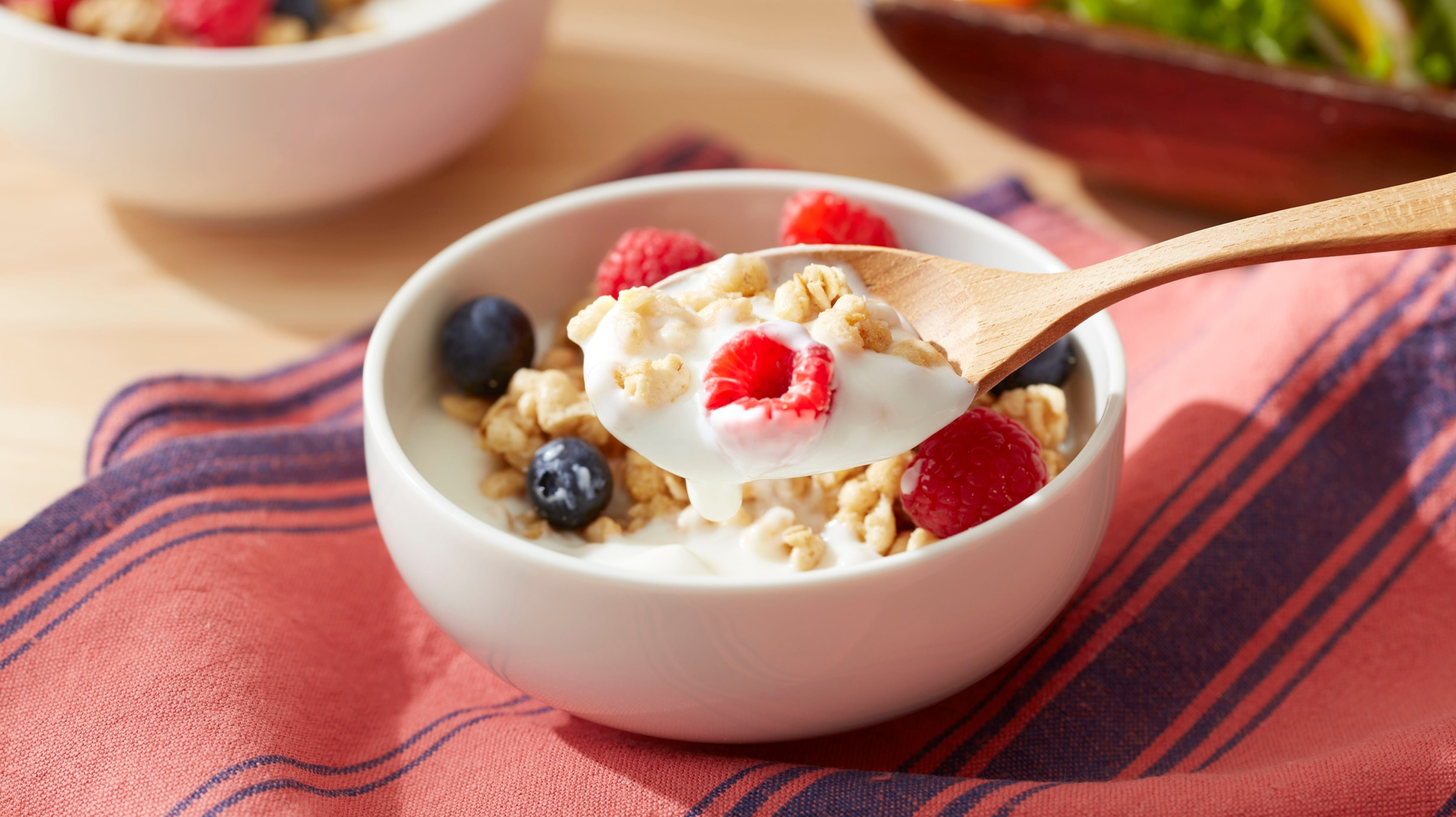
Apples in perimenopause
Apples are packed full of health benefits, especially when your hormones are changing. That’s why apples are among the best foods for perimenopause – and they’re often forgotten about. There’s a reason behind the saying “an apple a day keeps the Doctor away!”
If you’ve been suffering from digestion problems, such as constipation, apples will help due to their high fibre content. Plus, due to the skin (don’t peel your apples!), you’ll be giving your gut a good dose of good bacteria, leading to less bloating. If bloating is a key concern, try baking your apples. Even more pectin is released when apples are prepared this way.
When it comes to skin changes in menopause and perimenopause, apples can make a huge difference. Apples are chockablock with Vitamin D, Vitamin C and antioxidants that help with cell damage including those on your skin. When it comes to wrinkles and other ageing symptoms on the skin, apples are your best friend. These antioxidants also aid with a loss of bone density.
Vitamin C contributes towards creating collagen and melanin, giving your skin that glow you’ve been searching for.
Apples are also cooling foods because 85% of an apple is water. So, if you’re struggling with hot flashes and night sweats, apples will certainly come in handy.
Citrus fruits in perimenopause
Just like apples, citrus fruits are packed with Vitamin C. These fruits – grapefruits, oranges, and lemons, for example – are rich in flavones that all work to protect your body during perimenopause.
In particular, these flavones work together to guard your blood vessels and lower your risk of heart disease. Not to mention, citrus fruits are great for reducing inflammation and bloating.
Psst! Fact of the day: did you know that studies have found that higher consumption of citrus fruits is linked to lower risk of endometriosis?
Bananas in perimenopause
Bananas are among my favourites when it comes to foods for perimenopause because they are so easy to eat. Portable, delicious and packed full of nutrients that help with perimenopause symptoms.
Mood swings, in particular, are reduced by eating bananas due to their Vitamin B6 content. This special vitamin aids in serotonin production, which helps to regulate mood.
Not to mention, because bananas are packed with potassium, you’ll be doing your bones a favour every time you eat a banana. As you reach perimenopause, you’re at an increased risk of osteoporosis due to your falling oestrogen levels, so it’s best to protect your bones as best as you can.
Many perimenopausal and menopausal women struggle at work due to energy crashes and fatigue. That’s where bananas come in handy. They provide a quick increase to your energy levels due to natural sugars and carbohydrate content. Next time you’re flagging at your desk, eat a banana.
Finally, these super-fruits are great for digestive health; particularly if you’re constipated due to the high fibre content.

Avocados in perimenopause
Avocados are always on my list of foods for perimenopause because they are both delicious and nutritious.
First, avocados are rich in monounsaturated fats, which help with cholesterol levels and overall heart health. They’re also great for skin health and bloating due to the high Vitamin E content.
Like many other foods, avocados are great sources of phytoestrogens, which mirror the impact of oestrogen in the body. As your oestrogen levels fall, these mirrored compounds trick the body into believing your hormones are more balanced. As a result, you experience fewer perimenopause symptoms, including hot flashes, night sweats and mood swings.
Finally, avocados are full of Vitamin K, which helps with bone health by working with calcium absorption and bone mineralisation.
2. Fibre-full foods
You likely know that fibre is important, but what exactly is it? And why should we be eating fibre-full foods for perimenopause?
Fibre is a type of carbohydrate that is usually found in plants. The difference when it comes to this particular type of carbohydrate is that it’s not digested in the small intestine. It travels all the way to your large intestine and gets broken down, predominantly, by gut bacteria.
There are two types of fibre:
- Soluble fibre
- Helps with glucose level and blood sugar regulation
- Lowers cholesterol
- Makes you feel fuller for longer
- Often found in fruits and vegetables
- Also found in lentils, nuts, oats and seeds
- Insoluble fibre
- Helps your food move through your digestive systemWorks against constipation
- Often found in leafy greens, the skins of fruits and brown rice
- Helps your food move through your digestive systemWorks against constipation
So, why is fibre a must-have for perimenopause?
Fibre actually handles a heap of nutritional concerns.
Fibre and digestion (constipation, in particular)
First up and the most commonly known benefit: fibre helps with digestion and bowel movements. If you’re constipated, you should up your fibre intake. And seeing as constipation is a hugely typical perimenopause and menopause symptom, the vast majority of women in these groups could do with more fibre!
Fibre and weight control in perimenopause
Weight gain is, unfortunately, another super common perimenopause symptom. Consuming more fibre means you’ll stay fuller for longer, meaning you’re less likely to snack between meals.
Fibre and blood sugar levels in perimenopause
Blood sugar levels can do their own thing in perimenopause due to the changes in your oestrogen and progesterone levels. These hormones help to determine how your body responds to insulin and, during perimenopause, your blood sugar levels can raise.
As a whole, fibre-full foods have a lower glycemic index. This means that they increase blood sugar levels far more slowly and gently than other foods.
Studies have also shown that there’s a link between hot flashes and high levels of insulin resistance and raised glucose levels. It’s absolutely worth increasing your fibre intake for this alone, as more fibre may help reduce hot flashes and night sweats!
Fibre and mental health in perimenopause
Mood swings, anxiety and depression are common mental health side effects of perimenopause and menopause. The good news is that research has linked low levels of fibre consumption with depression.
Foods high in fibre for perimenopause
If you’re a little lost when it comes to which foods are high in fibre, stick to this list:
- Fibre rich fruits
- Apples
- Pears
- Berries
- Avocados
- Fibre rich vegetables
- Broccoli
- Carrots
- Brussels sprouts
- Kale
- Spinach
- Cabbage
- Green beans
- Peas
- Asparagus
- Artichokes
- Sweet potatoes
- Fibre rich nuts and seeds
- Chia seeds
- Flax seeds
- Pumpkin seeds
- Almonds
- Walnuts
- Fibre rich whole grains
- Brown rice
- Oats
- Quinoa
- Whole wheat bread
- Whole wheat pasta
- Buckwheat
- Whole rye
- Fibre rich legumes
- Black beans
- Kidney beans
- Chickpeas
- Haricot beans
- Lentils
- Edamame beans (soybeans)
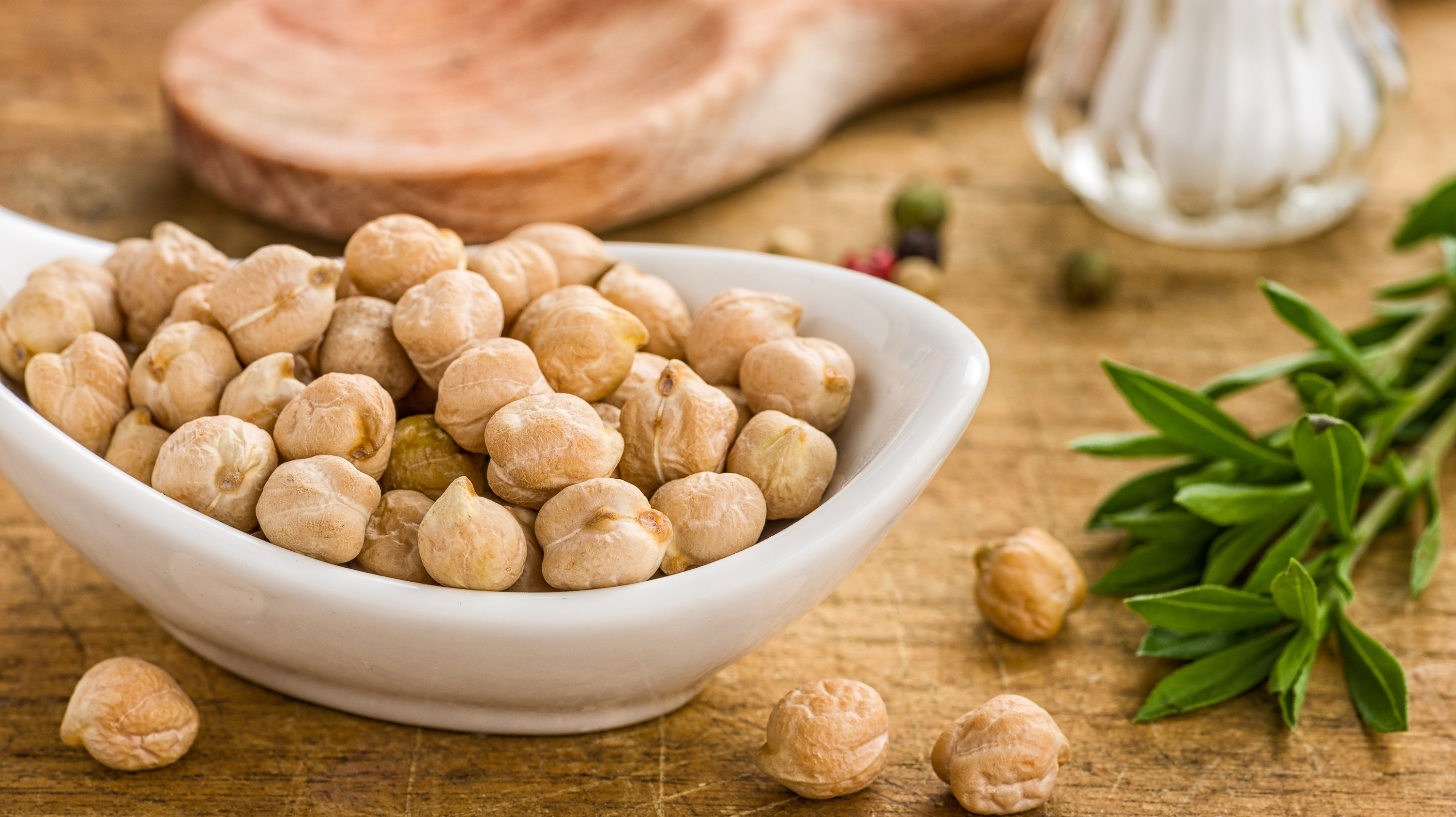
3. Healthy protein
Protein is super important in perimenopause. Of course, proteins aids with muscle mass and feeling full. However, protein is also crucial because of how falling oestrogen levels impact our bone density and lean tissue. This all helps to prevent unwanted weight gain, to improve our metabolism and enhance overall wellbeing.
Best protein sources for perimenopause
So, which protein sources make the list for the best foods for perimenopause and why? Consider adding the following to your shopping list this week:
- Lean meats
- Chicken breast
- Turkey
- Fish
- Salmon
- Trout
- Tuna
- Mackerel
- Eggs
- Legumes
- Beans
- Lentils
- Chickpeas
- Tofu
- Tempeh
- Dairy
- Greek yoghurt
- Low-fat milk
- Cheese (lower-fat options)
- Soy milk
- Nuts and seeds
- Almonds
- Walnuts
- Pumpkin seeds
- Sunflower seeds
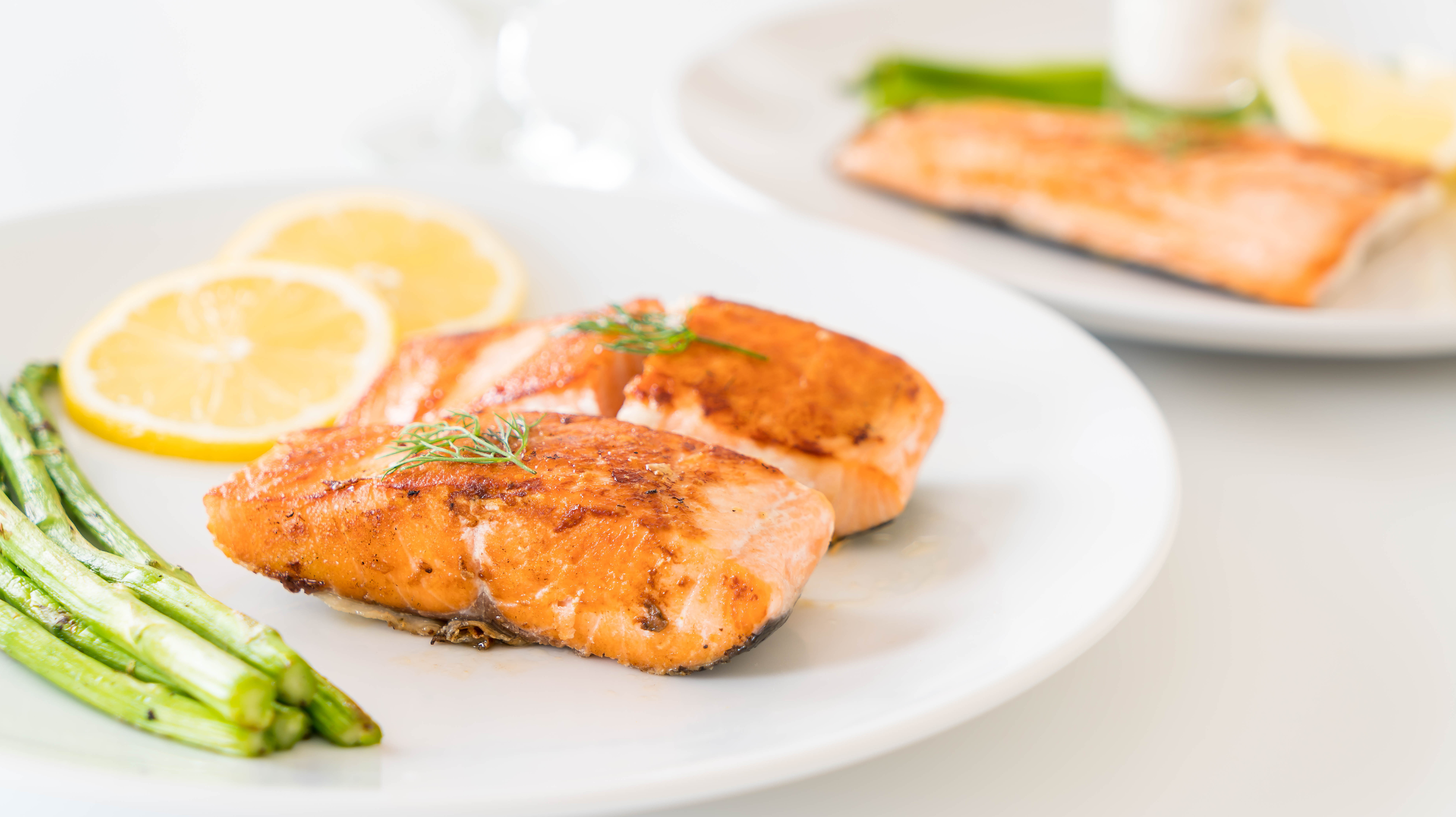
4. Calcium dense foods
If you’re in perimenopause, you may need more calcium than others. Calcium makes your bones healthy and strong – a fact we’ve known since early childhood. However, calcium also lowers your risk of cardiovascular disease and improves general health and wellbeing.
As your oestrogen levels fall, you may experience a loss of bone density. This makes your bones more fragile and more susceptible to damage. With this comes an increased risk of osteoporosis.
Calcium is critical for bone structure and works against this bone loss, so it’s important to make sure you’re getting enough of it through your diet.
On top of this, calcium is directly linked to your muscle concentration and nerve transmission. Without enough calcium in your diet, you may experience cramps, feel generally weak and frail and – weirdly enough – suffer with dental problems.
Calcium rich foods for perimenopause
In terms of which foods are high in calcium for perimenopause, follow the list:
- Dairy products
- Milk (low-fat or skimmed options to avoid saturated fat intake)
- Yoghurt
- Greek yoghurt (also high in protein!)
- Cheese
- Mozzarella
- Cottage cheese
- Leafy greens
- Collard greens
- Kale
- Bok choy
- Spinach
- Tofu
- Fortified foods
- Calcium-fortified cereals
- Calcium-fortified breads
- Plant-based milks (soy milk, for example)
- Sardines
- Nuts and seeds
- Almonds
- Sesame seeds
- Tahini (paste made from sesame seeds)
- Dried fruits
- Dried apricots
- Dried figs
- Beans and lentils
- Kidney beans
- Lentils
- Edamame beans
- Chickpeas
- Cannellini beans
5. Foods high in Omega-3 fatty acids
Omega-3 fatty acids can’t be created by your body on its own. So, you need to consume it. But why? Why are foods high in omega-3 fatty acids among the best foods for perimenopause?
While omega-3 foods are associated with anti-inflammation and better brain health, there’s even more to it – specifically when it comes to perimenopause.
- Omega-3 fatty acids help with inflammation
- If you’re struggling with joint pain, stiffness and bloating during perimenopause, omega-3 fatty acids will help.
- Your mood can be improved by omega-3 fatty acids
- Research has shown that omega-3 fatty acids can positively impact your mood, reducing signs of depression and anxiety and limiting mood swings.
- Omega-3 fatty acids help contribute towards hormonal balance
- Omega-3 fatty acids don’t impact oestrogen production. However, they do support general hormonal balance due to their health benefits, which will lead to less frequent and severe perimenopause symptoms.
- Support your heart health with omega-3 fatty acids
- During perimenopause, your falling oestrogen levels increases the risk of cardiovascular (heart) disease. Consuming omega-3 fatty acids helps to reduce cholesterol and lower your blood pressure.
Foods rich in Omega-3 for perimenopause
Omega-3 fatty acids can be found in a range of foods, despite many people believing they can be sourced only in fish. So, let’s take a look at the best sources of omega-3 for perimenopause:
- Oily fish
- Salmon
- Mackerel
- Tuna (but smaller portions due to mercury content)
- Sardines
- Herring
- Nuts and seeds
- Flaxseeds
- Chia seeds
- Walnuts
- Hemp seeds
- Soybeans and edamame
- Fruits (fruits aren’t the primary source of omega-3’s but a little goes a long way!)
- Avocados
- Kiwis
- Berries
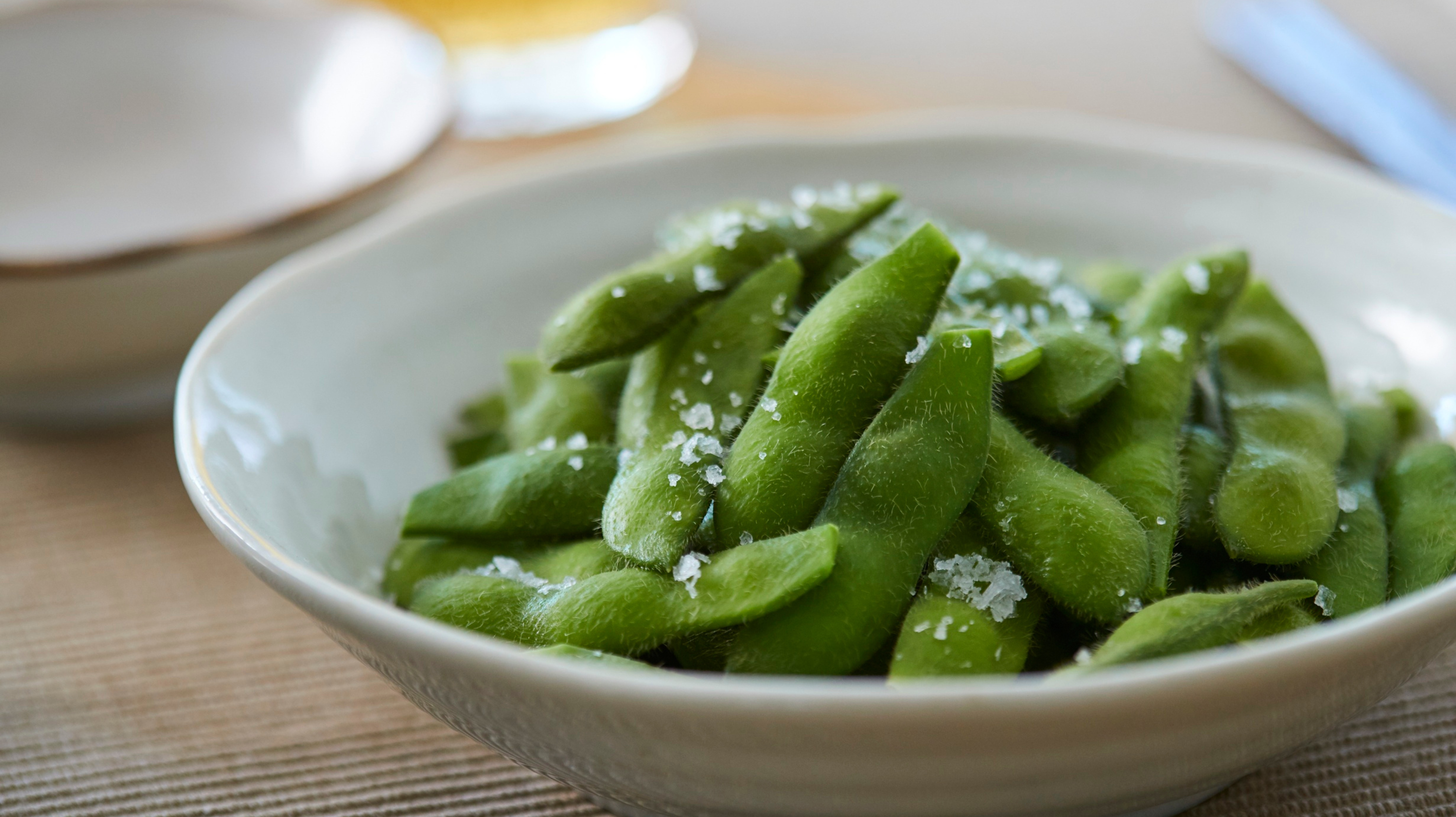
6. Foods containing magnesium
While you can take magnesium supplements, you should consume it naturally, too. When it comes to foods for perimenopause and their impact, magnesium can truly aid with certain symptoms.
Firstly, magnesium – like calcium, vitamin D and vitamin 12 – combats a loss of bone density. Magnesium strengthens bones and armours them against fractures and general damage.
On top of this, perimenopause often sparks restless nights and sleep deprivation. Magnesium will help with this, working to improve sleep quality. You’d be surprised at how much more manageable all the other symptoms of perimenopause are when you’re fully rested. Brain fog is less foggy, you’re not comfort eating as much, thus reducing weight gain, and your mental state is far steadier.
Foods containing magnesium
So, what are some magnesium rich foods? You can source this mineral in a variety of foods:
- Dark chocolate
- Also high in copper, iron and manganese
- Contains fibre that feeds good bacteria in the gut
- Good for heart health
- Consume dark chocolate at a minimum of 70% cocoa solids
- Don’t over-eat for weight control
- Avocados
- High in magnesium, potassium, vitamin B and vitamin K
- Excellent source of fibre, low in digestible carbs
- Good for cholesterol levels
- Reduces inflammation
- Makes you feel fuller for longer
- Nuts
- Almonds
- Cashews
- Brazil nuts
- Good source of fibre, too
- Aids with cholesterol levels and blood sugar
- Anti-inflammatory
- Tofu
- Excellent source of magnesium, protein, calcium, selenium, iron and manganese
- Legumes
- Chickpeas
- Lentils
- Beans
- Peas
- Soybeans
- Additionally high in potassium and iron
- Rich in fibre with a low GI, thus aiding with cholesterol and blood sugar levels
- Seeds
- Flaxseeds
- Pumpkin seeds
- Chia seeds
- Also high in iron, omega-3 fatty acids and monounsaturated fat
- Excellent source of fibre and antioxidants
- Whole grains
- Oats
- Barley
- Wheat
- Buckwheat
- Quinoa
- Contain high levels of fibre and vitamin B
- Oily fish
- Salmon
- Mackerel
- Halibut
- Also contains high levels of potassium, vitamin B and other nutritional powerhouses
- Bananas
- Rich in magnesium and potassium
- Also contain vitamin C and B6, fibre and manganese
- Bananas help with inflammation, lower blood sugar levels and improve general gut health
- Leafy greens
- Collard greens
- Spinach
- Kale
- Excellent source of magnesium, iron, vitamins (A, C and K) and manganese
- Provides cell protection
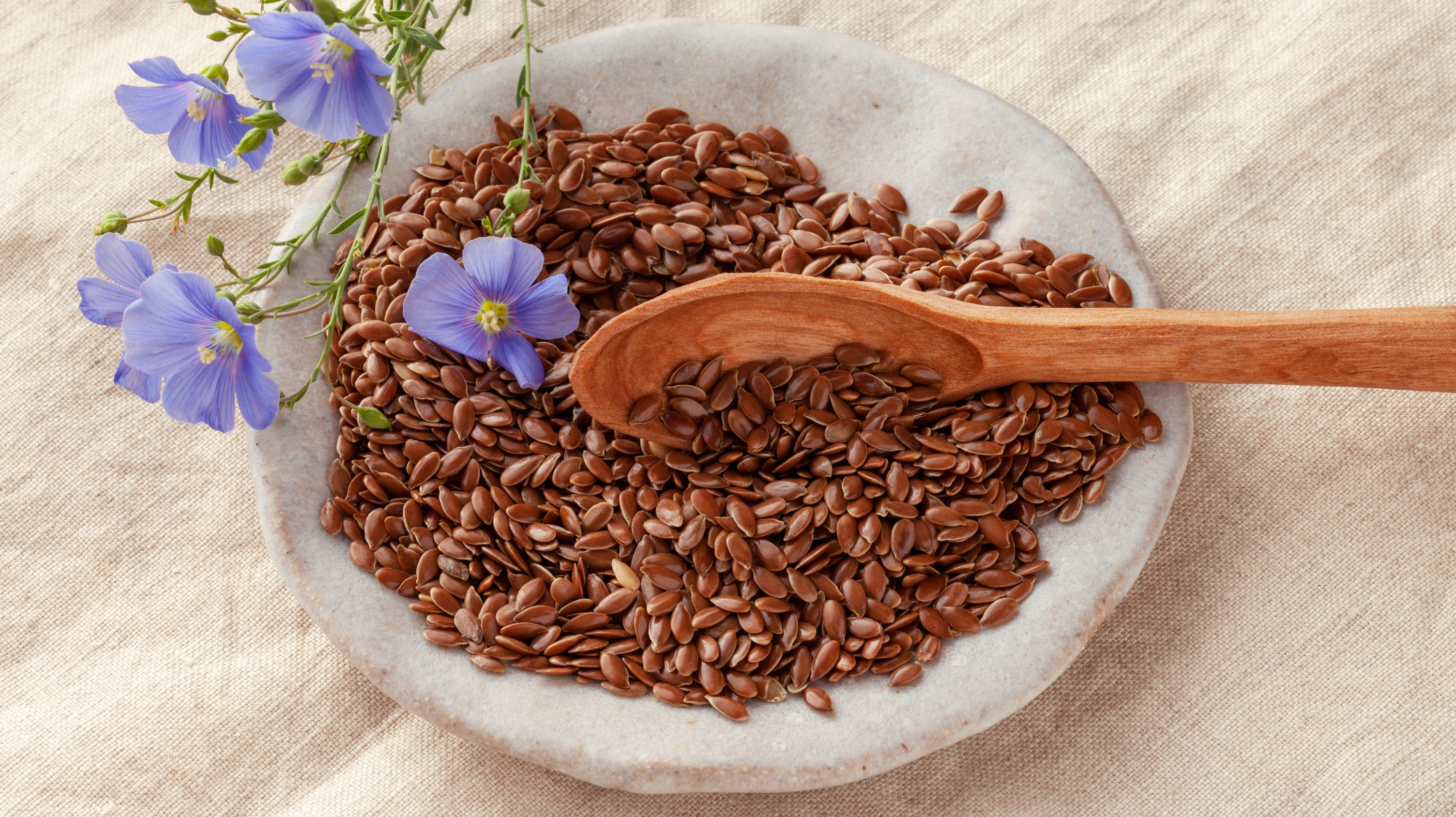
Foods for perimenopause – when to seek help
It can be confusing if you’re just starting out on your nutritional journey. Especially when you consider that everyone is different and their body reacts uniquely to foods.
That’s why, if you’re struggling or you want to cut out the experimentation phase, working with a Menopause Nutritionist is best.
A Menopause Nutritionist will take everything into account: your symptoms, your current diet, your likes and dislikes and your blood work. With that, you’ll receive a personalised, bespoke diet plan that doesn’t compromise preference for nutrition. You can have both. With me, you’ll always be able to have both.
Foods for perimenopause – in a nutshell
Navigating through this phase of life can be confusing. However, nutrition can revolutionise your experience. Knowing the worst foods for perimenopause is just as important as knowing what foods will aid with your symptoms.
Cutting out foods entirely may not be the answer. It’s all about balance, after all.
From reducing foods high in trans fats, sugar and gluten, cutting back on alcohol and caffeine and doing your best to avoid artificial sweeteners and reducing spice levels, you’ll be doing your body a huge favour. You’ll receive its thanks by experiencing fewer and less severe perimenopause symptoms.
Swap out those for foods for perimenopause – ones that are streamlined to help you and your symptoms. From fresh fruits and veggies to foods full of fibre, protein, calcium, omega-3 fatty acids and magnesium, eating strategically will completely change your perimenopause journey.
Leave a Reply
- free ebook alert -
WHAT TO EXPECT WHEN YOU’RE
going through the menopause
Demystify your understanding of what’s happening to you. Arm yourself with solid, game-changing information to support you through this challenging phase of your life.
grab your copy now →
WHAT TO EXPECT WHEN YOU’RE
going through the menopause
Just want to say a big thanku 🫶the way u have broken it down into sections has really helped me to understand exactly ‘
What it is I’ve been lacking in my diet !!!!! A Very grateful ☺️ (perimeni) reader xx
Ah, Joanne! I’m so grateful you’ve taken the time to leave a comment. So very glad you gained some value from this post. I’m always on Instagram if you need any help or have any more questions. Lotsalove! xx
Hi Charlotte. This is so helpful. I was a bit lost on the best foods and triggering foods as this is all new to me, but this has calm my anxiety a bit. This is very beneficial in the time where I am just finding out about premenepaus without being overwhelming or making you feel as if this is the end of your day’s. Your notes have now given me ideas for meals and snacks to assist me during the day. Thank you very much.